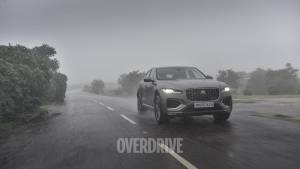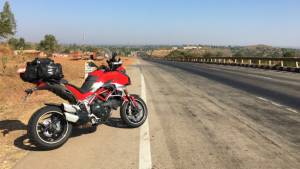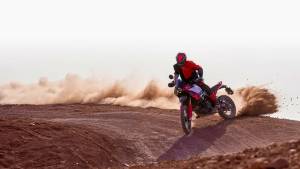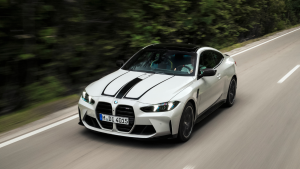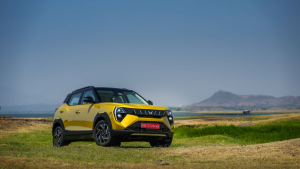Better Riding: Lean angles are about risk
Whether you get your knee down or not - I don't - or whether you hang off or not - I do - bikes feel great when they're leaned deeply in a corner, right? I think so too. But as nice as leaning feels, it's a moment of great risk.
When a motorcycle departs the vertical, its tyres have to work a lot harder. There is some ac/deceleration they must deal with. The turning arc adds sideways loads and a small amount of sideways slip (this is normal and not a slide). The harder you lean, the more work for the tyre. If you're smooth, the tyre has a slightly easier job, if you're not, it has to absorb all of your jerky inputs. The problem is that diminished overall grip creates a fragile equilibrium that is easy to upset.
Motorcycles have to lean over into corners to change direction, but there are ways to minimise risk. Even if you cannot actually reduce the actual angle, you can dramatically reduce the amount of time you spend at that angle. Here's how.
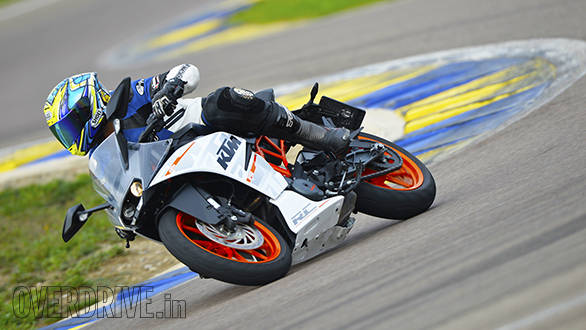
Riders are afraid. The open chasm of a valley or a wall of hard rock on the outside of a mountain road corner causes your brain to react. You instinctively want to turn quickly away from the danger. What this leads to is a well understood problem called turning in too early. That leads to an early apex (the point where you come closest to the inside of the corner) and that, further, leads to another troubling problem, you exit really wide requiring either a second steering input or interrupted acceleration. This approach happens to require the motorcycle to sit at a high lean angle for a long time and you may not be able to open the throttle early and stabilise the bike either. It's a high risk situation. Fortunately, it's avoidable.
What you need to do, is tear your eyes off the perceived danger and look where you need to go next. This calms your nerves. It will also allow you to the run deeper into the corner before you initiate a change of direction. In the process, you will see further into the corner, which is better for your nerves and safety.
But look at what happens next. Because you start turning later, you have to make a sharper steering input. This sounds higher risk but what actually happens is that you use a high lean angle for a short instant and then you're already on a smoother, wider exit line. This and the fact that you can see further allows you to immediately open the throttle which brings stability. Opening the throttle also creates more cornering clearance as the bike lifts to accommodate this input - fewer hard scrapes to interrupt you. The lifting of the bike means less lean angle and less risk. It gets better. This line leads to a later apex which leads to an exit where you don't run quite so wide. So you're unlikely to wander into oncoming traffic or off the road.
Remember that it feels very different from an early apex. You go in significantly slower and that can feel like you're not on the pace. But you come back on the throttle so much earlier, that your exit is usually much faster and you are usually going quicker overall. That's why it's called slow in fast out. Another reason why it feels slower is because your perception of the danger you're in, whether from the visuals or from lean angle, is lower. You feel safer and more stable.
How to practise this? Wait a little bit before you turn the bike into a corner. This is easy to do at the racetrack. On the road, start by waiting an extra foot or two and then extending that distance slowly as you get used to it. Can you go too deep? Of course and you'll realise it when that happens easily long before it puts you at risk. If you're trying this on a public road, remember, as always, to check your mirrors - riders turning in early may be faster than you in the first part of the corner and then much slower afterwards.
For more Better Riding articles, click here
Starts Rs 3,14,000
373cc
6-Speed
43.00
37.00
-NA-
Related Stories
Top Stories
Latest Videos
Most Popular
- New Bajaj Pulsar NS400 pictures leaked
- Bajaj NS400 picture leaked ahead of its launch
- 2014 Triumph Daytona 675 vs 2024 Kawasaki ZX6R - A Decade of Evolution in Supersport Motorcycles
- 2024 Bajaj Pulsar N160 launched at Rs 1.39 lakh; gets USD forks & new features
- Budget Sportbike Showdown: Kawasaki Ninja 500 vs Aprilia RS 457 vs Yamaha YZF-R3
